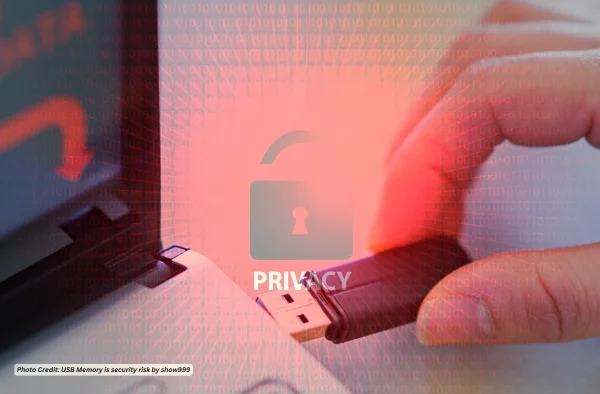Mastering media security, defending your data
Share

As digital transformation accelerates, Australia’s public sector faces growing challenges in cyber security and data privacy, particularly concerning the use of removable media such as USB drives, external hard discs, and memory cards. Leaders in the public sector nationwide must take immediate action to mitigate these risks, safeguard sensitive information, adhere to data protection regulations, and uphold public trust.
Removable media provides a cost-effective and portable solution, but it carries significant risks, including data breaches, malware infections, and unauthorised access. Cyber threats grow more complex, and the strict requirements of Australia’s Privacy Act 1988 (Cth) heighten these risks. Weak management and inadequate technical protections jeopardise the public sector, exposing sensitive information, incurring significant penalties, and damaging its reputation.
Removable media threats
Removable media provides convenience and cost savings, but it also presents significant cybersecurity and data privacy threats that public sector organisations must seriously address. Australia’s public sector faces significant challenges in managing sensitive citizen information, necessitating strict adherence to regulations such as the Privacy Act 1988 (Cth). This outlines the primary risks, their potential outcomes, and the wider ramifications:
- Data loss and theft: Removable media offers convenience but increases the risk of losing devices or having them taken without permission. Inadequate encryption and access controls expose sensitive data and potentially breach the Privacy Act 1988. Legal repercussions, harm to reputation, and possible interruptions in operations arise from compromised data.
- Malware infiltration: Removable media can introduce harmful software into government systems. The GHD’s Cybersecurity Strategy Report identifies the risks that unsecured devices pose, acting as entry points for malware and threatening the stability of essential public sector infrastructure. Malware infiltrates systems, causing significant disruptions, compromising data integrity, and increasing recovery costs, which jeopardises the ongoing provision of vital public services.
- Unauthorised access: Devices without password protection or encryption significantly risk unauthorised access. This poses serious risks to public safety and operational integrity, potentially leading to data manipulation, information leaks, and the unauthorised disclosure of classified information.
- Data duplication and inconsistency: Using removable media often creates many data copies, complicating data governance and making it difficult to identify the original data source. Discrepancies in reporting, mistakes in decision-making, and difficulties during regulatory compliance audits can arise.
- Regulatory non-compliance: Failing to safeguard removable media can violate Australia’s data privacy regulations, leading to legal repercussions and damage to reputation. Ignoring rules leads to financial fines, increased government scrutiny, and a loss of public trust.
Check out: “Muswellbrook Shire supercharges cybersecurity for safety“
Mitigating security risks
Public-sector organisations must adopt strong technical security measures in their cybersecurity and data governance strategies to counter the increasing threats posed by removable media. These measures protect sensitive information and comply with Australia’s stringent data privacy regulations. This document outlines essential technical safeguards, their practical applications, and the consequences of implementing them:
- Encryption
Encryption transforms data into a coded format, ensuring that only those with the appropriate decryption key can access it. AES-256 encryption secures all removable media, ensuring that if someone loses or steals a USB drive or external hard disc, the data stays safe and is inaccessible to unauthorised individuals. Encryption significantly reduces the risk of data breaches and helps organisations comply with privacy regulations, such as the Privacy Act 1988 (CTH), which mandates the protection of personal information.
- Password protection
Strong, unique passwords limit access to data stored on portable media. Password security on USB devices limits access to permitted users, preserving data integrity against illegal access or transfer. This project limits illegal access and lowers the possibility of data leaks, guaranteeing the safety of private data and strengthening public trust.
- Access controls
Access controls restrict designated personnel and approved devices from using removable media. Group Policy Object settings on Windows systems effectively restrict the use of unauthorised USB devices, ensuring employees do not utilise unapproved removable media. Limiting access helps organisations reduce the threat of malware infections and ensures that only compliant devices are in use, which strengthens overall cybersecurity measures.
- Audit logs and monitoring
Data transfers using removable media create audit logs that show who accessed specific data and when those events occurred. To identify suspicious behaviours, including illegal data transfers, use endpoint detection and response (EDR) technologies to monitor and document every activity related to removable media. Audit logs ensure responsibility, enable quick incident response, and support forensic investigations in the event of a breach.
- Endpoint security solutions
Endpoint security solutions safeguard devices that interact with removable media by identifying and preventing harmful actions. Antivirus software with real-time scanning on every endpoint swiftly detects and isolates any malware introduced through removable media. This initiative stops the spread of malware across the network, reducing the chances of operational interruptions and protecting data integrity.
By adopting these technical security measures, public sector organisations significantly reduce the risks linked to removable media, maintain compliance with data privacy regulations, and enhance their overall cybersecurity framework. Proactive measures protect sensitive information, uphold public trust, and ensure the secure provision of government services.
Safeguarding public data
Using removable media without regulation significantly risks the integrity and security of public sector data in Australia. Unsecured devices lead to data breaches that threaten essential public services, compromise sensitive government information, and expose confidential data to malicious entities. These violations significantly risk national security and may undermine the public’s confidence in government entities. Data privacy breaches lead to hefty fines and penalties, intensifying the issue and forcing organisations to devote considerable resources to legal disputes and compliance adjustments.
The Computer Weekly’s Data Protection Report emphasises the increasing complexities of managing public sector data. The deepening integration of cloud storage, artificial intelligence, and data analytics in government functions stresses the need to prioritise the essential security of removable media. Cutting-edge technologies, like generative AI, data modeling, and governance frameworks, increase the demand for strong data protection protocols. Securing removable media prevents data inconsistencies, supports data-driven decision-making, and closes vulnerabilities that adversaries can exploit.
Public sector officials in Australia must respond swiftly and decisively to the increasing dangers posed by portable media. Devices like USB drives and external hard drives face vulnerabilities, including data breaches, malware infections, and compliance violations, highlighting the urgent need for robust cybersecurity systems. Organisations mitigate these risks by adopting technological safeguards like encryption, access controls, and AI-enhanced monitoring systems that ensure adherence to Australia’s stringent data privacy regulations, including the Privacy Act 1988 (CTH).
Australia’s public sector cybersecurity will thrive through continuous innovation and adaptability. Innovative advancements, like predictive data modelling and AI-driven threat detection, effectively counter increasingly sophisticated attacks. Public sector agencies must prioritise their network security infrastructure and build connections with cybersecurity experts to stay informed about evolving threats.

Justin Lavadia is a content producer and editor at Public Spectrum with a diverse writing background spanning various niches and formats. With a wealth of experience, he brings clarity and concise communication to digital content. His expertise lies in crafting engaging content and delivering impactful narratives that resonate with readers.










Today’s Pick
11th Annual Aus Goverment Data Summit
April 1, 2025
7th Annual NZ Government Data Summit
May 7, 2025
3rd Public Sector Comms Week
May 14, 2025
Subscribe
We send emails,
but we do not spam
Join our mailing list to be on the front lines of healthcare , get exclusive content, and promos.
AI analytics appointment Australia Australian boost boosts business businesses covid-19 cyber attack cybersecurity cyber security data data breach data management defence Digital employment enhance enhances fraud funding governance government grants infrastructure Innovation Lockdown management new zealand NSW NZ online privacy public Public Sector queensland renewable energy scams security Social Media Technology telecommunications victoria
-

Queensland advocates sustainable infrastructure development
Infrastructure, News
-

Set data in motion for dynamic, interactive citizen services
Data Management, Sponsored Story
-

Migrants not to blame for Australia’s housing crisis
Local Government, Opinion
-

Navigating the complexities of Australian visa applications
Digital Government, Local Government, Opinion
Show More-

Effects of ineffective communication in the workplace
Communications, Personal Development
-

7 ways you can enhance your personal development skills
News, Personal Development
-

5 advantages of working in the public sector
News, Personal Development, Professional Development
-

7 causes of communication issues in the workplace
Communications, News, Personal Development
Show MoreLast Viewed